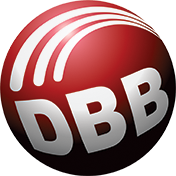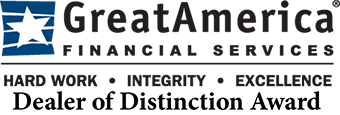The COVID-19 pandemic wreaked havoc with physician practices and healthcare in 2020, where many providers saw stunning declines in productivity and associated revenues. In general, physician productivity fell by over 8%, although this varied among specialties. Factors that contribute to limited productivity include providers being burdened with non-productive tasks such as searching for information, inefficiencies in patient flow, and others. In addition to lowered productivity, staff burnout and job dissatisfaction rose, causing up to 30% of healthcare workers to consider leaving their jobs.
Three Factors Hurting Your Medical Office Productivity and How to Solve Them
Topics: Managed IT, Document Management, healthcare, print infrastructure, cybersecurity
How Document Management Benefits Private Practice Physicians
Running a private medical practice is a challenging, but rewarding, business endeavor. Other than staff, patient documents are the most valuable parts of any medical practice. They serve an important role in ongoing patient relationships and require incredible care in order to protect patient privacy. Unfortunately, managing these documents in traditional ways can prove to be time consuming and costly. For a small, private practice; document management is even more challenging thank to limited staff resources and space for storing documents.
Topics: Document Management, healthcare, private practice, hipaa
Developing an IT Strategy for Your Accounting Firm
As with other industries impacted by the COVID-19 pandemic, the world of accounting is seeing rapid changes in the way business is conducted. There has been a marked shift away from time-based billing strategies, the addition of more advisory work on the horizon, and an escalation in the number of remote working teams.
Topics: Document Management, digital documents
Essential Guide to Managing the Remote Legal Team
As the business environment continues to shift to meet expectations and changes brought about by the ongoing pandemic, law firms and legal departments must ensure that workflows continue uninterrupted — even when teams are increasingly geographically scattered.
Topics: Document Management, remote work
Why Operational Efficiency is the Key to a Profitable Healthcare Operation
With average operating margins still remaining 30% below their 2015 levels, health care providers are searching for new ways to regain profitability among a bevy of challenges. While these challenges include an increase in publicly funded patients, rising denials of claims from insurers, and lowering collection rates, some of the strain can be chalked up to inefficiencies in the workplace.
Topics: Document Management, healthcare
Exploring Why Document Management Systems are the Key to Remote Work
While progressive companies have leveraged the power of document management software to amplify the efficiency of their workflows for years, a current emphasis on remote work has brought this technology to the forefront for a new generation of business owners.
Topics: Document Management, digital documents, remote work
Electronic Content Management Path for County Governments
County and local governments are heavy document creators and are usually required to store these documents forever. For those localities that have not made the transition to digital, the space to store these documents can become quite costly.
Topics: Document Management, electronic content management, secure documents, digital documents, paperless, eforms, auditing, scanning
How to Ensure Your Firm Keeps Legal Documents Secure
The document generation, distribution, and storage processes in the legal profession remains unrivaled by any other industry. As practicing law depends on extensive record-keeping, the amount of documents generated every day is staggering. By 2015, attorneys were generating more documents individually than they could manage alone.
Topics: Document Management
The lowest cost per copy or page is probably not your best buying criteria.
Let’s first address the factors which determine a cost per copied or printed page and in order to do this let’s assume an average monthly volume of 5,000 pages.
In a true cost per page, the equipment would be included. If the cost of the equipment is the industry average, $6,500, and is leased for five years this should be approximately $130 per month. At 5,000 pages per month, you will need $.026 per page just to cover the equipment cost.
Toner is a huge factor in determining cost per page. Our example above is a color device. This means it will require four toners at a time: Black, Cyan, Magenta and Yellow. Let’s assume the price for a black toner is $79 and yields approximately 16,500 pages based on 5% coverage. This would make just the black toner $.0048 per page.
The Cyan, Magenta and Yellow toners each cost $120 and yield approximately 5,500 pages based on 5% coverage. Each color toner costs $.022
A Full Color Page is calculated at 20% coverage of the page and based on these numbers, would equate to approximately $.07 just in toner costs.
Now, I am going to throw a wrench out, not to get us sidetracked, but it is something that definitely needs to be addressed. What happens when you want to have an extra set of toners on the shelf but you are only paying a cost per page price?
Toners on the shelf are not actually generating any cost per page revenue for your vendor. In the scenario above, this would equate to $439 in additional costs not factored into the cost per page. In essence, the cost per page for black just doubled to $.0096 per page and $.14 for a full color page just for toner. While there is the argument of having extra toner so you never run out and experience downtime, the fact is the number one cause of running out of toner is human error. The technology today is so advanced, if you sign up for our AutoTech program, you will never need those additional toners on the shelf nor need to worry about human error. You can read more about AutoTech,

Other consumable items would include the following:
Photoconductor or Development Units are often referred to as drums. In a color device, there will also be four of these units: Black, Cyan, Magenta and Yellow. They often range from $100 - $200 each.
Transfer Belts are also in the $100 - $200 range, as are Fusing Units or Fusers and Exhaust Filters.
Topics: Managed Print Services, Business Improvement, Printing, Faxing, Copier Pricing, Pricing, Copier Issues, Process Improvement, Copier Service, Document Management, Net Promoter Score, Customer Satisfaction, NPS, MPS, Response Time, Repair Time, Printer Service, Office Equipment Buying Guide, Printer Pricing, Copier RFP, Office Equipment Criteria, Cost Per Copy, Cost Per Page
Managed Print Service: Award Winning Collaborations
Doing Better Business began creating custom Printer Fleet Management programs in 2004 to help our clients measure, right-size, optimize, manage and constantly work towards improving business processes with the main emphasis on continual evolution towards a more paperless office.
Topics: Managed Print Services, Business Improvement, Printing, Industry Trends, Faxing, Awards, Process Improvement, Customer Service, Copier Service, Document Management, Customer Satisfaction, MPS, Customer Service Excellence, Printer Service, Ricoh Service, Copier RFP











